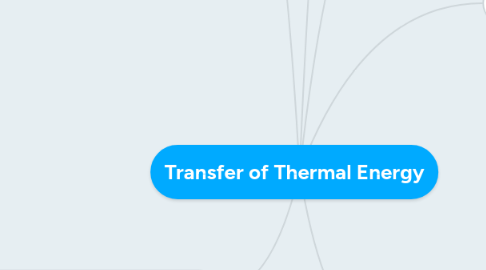
1. Common Applications of Conduction
1.1. Conductors
1.1.1. 1. Cooking utensils
1.1.1.1. kettles saucepans are usually made of aluminium or stainless steel
1.1.2. 2. Soldering iron rods
1.1.2.1. The tips of soldering iron rods are made of copper, as copper is a much better conductor of heat than iron
1.1.3. 3. Heat exchangers
1.1.3.1. Heat exchangers are used in large laundry facilities to help save electricity.
1.1.3.2. They reduce the amount of electricity required to warm the clean water to a temperature that is optimal for washing
1.2. Insulators
1.2.1. 1. Prevent injury or damage
1.2.1.1. (a) Handles of appliances and utensils: in order to prevent burns, the handles of utensils are usually made of wood or plastics, which are poor conductors of heat
1.2.1.2. (b) Table mats: to protect tabletops, hot kitchen wear are usually placed on top of table mats that are made of insulators such as cork
1.2.2. 2. Reduce heat loss
1.2.2.1. (a) Clothing for cold weather: woollen clothes help to keep people warm by trapping a layer of insulating air
1.2.2.2. (b) Double glazed windows: Air is trapped between 2 panes of glass to reduce thermal energy transfer through the windows
2. Common Applications of Convection
2.1. 1. Electric kettles
2.1.1. Heating coils in kettles are found at the bottom, to enable the transfer of thermal energy in water by convection
2.1.1.1. 1- When the power is switched on, the water near the heating coil heats up, expands and becomes less dense
2.1.1.2. 2. the heated water therefore rises, while the cooler water at the upper part of the kettle sinks to replace the heated water
2.1.1.3. 3- a convection current is set up
2.2. 2. Household hot water system
2.2.1. designed based on the process of convection in water
2.2.1.1. 1- water is heated in the boiler by gas burners. the hot water expands and becomes less dense. Hence, it rises and flows into the upper half of the hot water cylinder
2.2.1.2. 2- To replace the hot water cooler water from the cistern flows into the lower half of the cylinder and then into the boiler due to the pressure difference
2.2.1.3. 3- The overflow pipe is attached to the top of the hot water cylinder. it is used to channel excess hot water into the cistern when the temperature of the water becomes too high and causes the hot water to expand to a large amount
2.2.1.4. 4- The hot water tap is positioned lower than the cistern. this creates a pressure difference that causes the water to flow out of the tap
2.3. 3. Air conditioners
2.3.1. they are always installed near the ceiling of a room to facilitate the setting up of convection currents.
2.3.1.1. An air conditioner releases cool dry air into the room. as cool air is denser, it sinks. The warm air below, being less dense, rises and is drawn to the air conditioner, where it is cooled.
2.3.1.2. In this way, the cool air is circulated and the temperature of the air in the room will eventually drop.
3. Conduction
3.1. CONDUCTION is the transfer of thermal energy through a medium without any flow of the medium
3.2. in non-metals: Vibration of particles
3.3. in metals: Vibration of particles and free electron diffusion
3.4. Requires a medium
4. Convection
4.1. CONVECTION is the transfer of thermal energy by means of convection currents in a fluid (liquid or gas), due to a difference in density
4.2. by means of convection currents on the fluid (liquid or gas)
4.3. convection currents form due to changes in density of the fluid
4.4. requires a medium
5. Radiation
5.1. RADIATION is the transfer of thermal energy in the form of electromagnetic waves such as infrared radiation without the aid of a medium
5.2. By the transfer of thermal energy in the form of infrared radiation
5.3. no medium required
6. Common Application of radiation
6.1. Greenhouses
6.1.1. 1- During the day, infrared radiation from the sin passes through the glass roof of the greenhouse. This warms up the soil and plants in the greenhouse.
6.1.2. 2. The soil and plants inn the greenhouse get warm and emit infrared radiation with longer wavelengths
6.1.3. 3- Infrared radiation with longer wavelengths is unable to pass through the glass roof. It gets trapped in the greenhouse.
